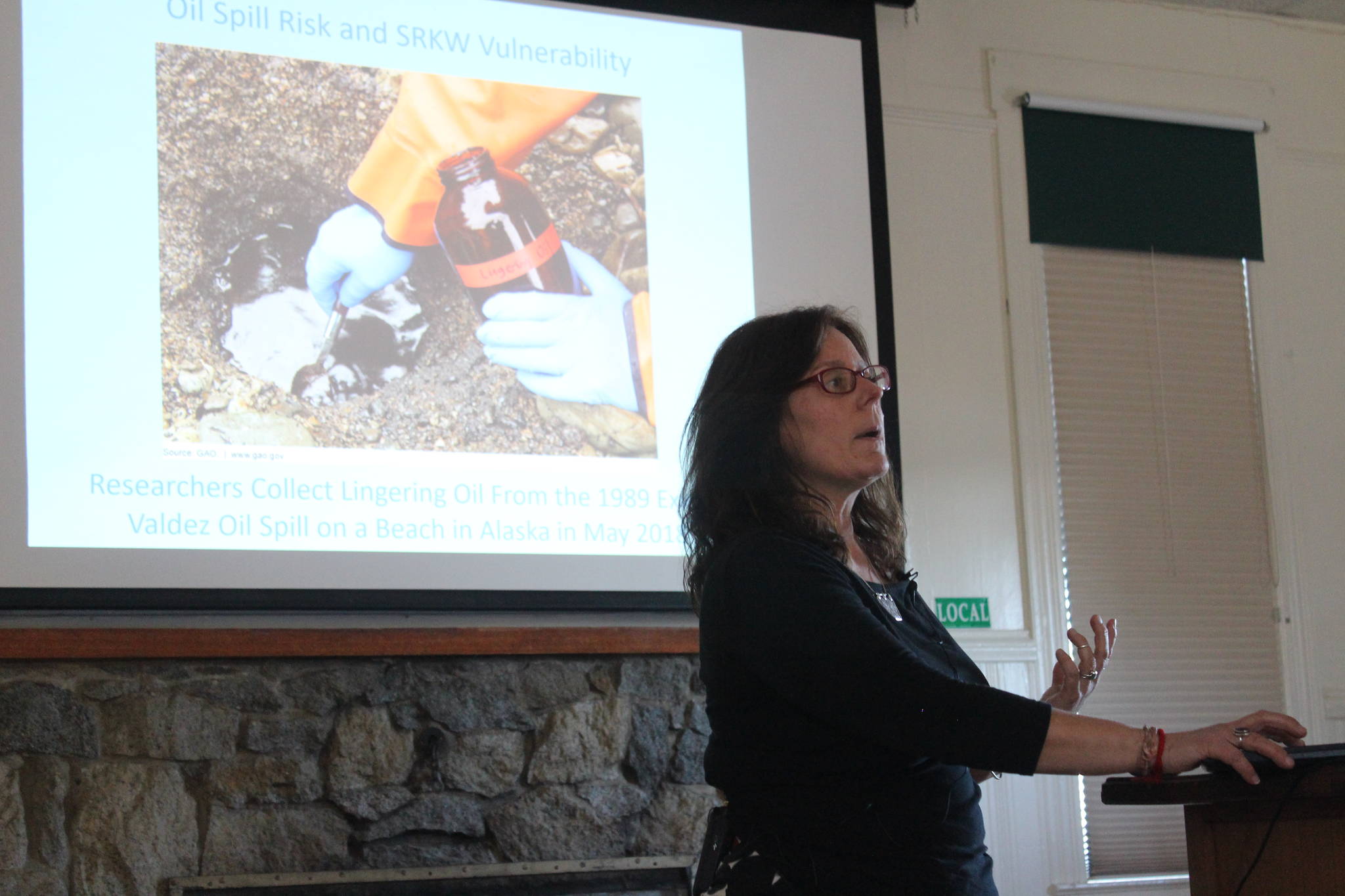Warm spring weather feels like paradise in the San Juan Islands. Beneath the surrounding shimmering waters, however, Chinook salmon and the Southern resident orcas that frequent the San Juan Islands are at a crisis, swimming toward extinction.
“Since listing the orcas as endangered in 2005, we have gone in absolutely the wrong direction,” Deborah Giles, who has a P.h.D. in marine conservation biology, told attendees of Protect What You Love. Giles is science and research director for Wild Orca, an educational nonprofit. Protect What You Love is an event sponsored by conservation nonprofit Friends of the San Juans to educate citizens how they can preserve this endangered species.
Threats to the resident killer whales include lack of prey, noise from vessel traffic and pollution, according to Giles. Chinook once weighed 120 pounds, she explained, standing in front of a screen that showed a photo taken in the 1920s of two fishermen in Astoria, Oregon, holding two Chinook nearly as large as the men. The orcas only needed three a day to survive, she said.
As overfishing, dams, pollution and climate change have impacted salmon, the whales need to exert more energy searching farther for fewer and smaller fish, according to Giles. This lack of prey has made it difficult for females to carry a pregnancy to term, and for the few newborn calves to survive and thrive.
Pacific Fishery Management Council will be taking public input on their proposed fishing regulations, Stephanie Buffum Fields, Friends of the San Juans’ executive director, said, and it is imperative islanders have their voices heard.
In a proposal, originally introduced by Greg Hertel with the Port of Friday Harbor last September, Southern residents would be accounted for when the salmon stock is divvied up among recreational fishing, tribes and commercial companies. The 547,000 fish the endangered species needs to survive, would be allocated just to feed the Southern residents. The Pacific Fishery Management Council meets April 9, and whether it will set aside the requested salmon remains to be seen, according to Giles.
Giles also works with Conservation Canines, a program pioneered by professor Samual Wasser form the University of Washington, that uses dogs to find orca scat which researchers then collect and study. From the scat, she is able to gather a wide array of information about gender, nutrition, stress hormones, toxicant levels, disease and parasites.
“Once we collect a fecal sample, it’s almost like the sky is the limit as to what we can find out,” Giles said.
It was through that study that it was discovered vessel fumes were present in the Southern resident’s systems prior to setting a 200-yard distance. After distance regulations went into effect, evidence of engine exhaust diminished.
Keeping the theme of pollution, and vessel traffic, Buffum Fields explained projects that are expected to increase oil tanker traffic through the Salish Sea. Proposed developments in Canada, Anacortes and Tacoma combined could mean over an additional thousand of ships per year, transporting oil through local waters.
Giles showed a photo of oil that still remains on an Alaskan beach, 30 years after the Valdez accident.
“This was taken recently — you can still see the effects of that spill,” she said, explaining that there is now only seven members left in one pod of orcas from that region and other pods are struggling.
“This is what keeps me up at night,” Giles said. “This would be the end of the Southern residents. They simply could not survive an oil spill.” _
For more information about the Pacific Fishery Management Council visit pcouncil.org. To learn more about Wild Orca visit wildorca.org, and Friends of the San Juans sanjuans.org.



